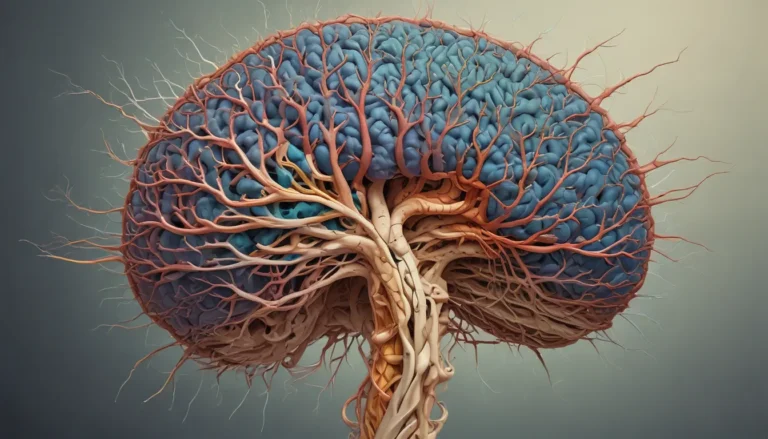A Note About Images: The images used in our articles are for illustration purposes only and may not exactly match the content. They are meant to engage readers, but the text should be relied upon for accurate information.
When we gaze upon the rich tapestry of life on Earth, our minds often gravitate towards the biotic factors – the plants, animals, and microorganisms that populate our planet. However, there exists another realm of influences that are equally essential in shaping the ecosystems we know and cherish – abiotic factors. These non-living elements in our environment wield a mighty influence on the distribution and abundance of organisms, guiding the intricate dance of life on our planet.
In this enlightening exploration, we will embark on a journey into the captivating world of abiotic factors and uncover the astounding truths about their impact on life. From the profound effects of temperature and sunlight to the critical role of water availability and soil composition, these factors have molded Earth’s ecosystems over billions of years. Prepare to be awestruck as we unravel the incredible ways in which abiotic factors sculpt the very fabric of life on our beloved planet.
A Closer Look at Abiotic Factors
Abiotic factors, such as temperature, water availability, light intensity, soil composition, wind, altitude, pollutants, natural disasters, and adaptations, play a pivotal role in shaping ecosystems. These non-living components intricately govern the distribution, abundance, and functioning of organisms within an ecosystem, weaving a complex web of connections that sustain life on Earth.
Temperature: The Great Influencer
Temperature stands as one of the cornerstones of abiotic factors, exerting a profound influence on the physiology and behavior of organisms. Different species harbor specific temperature requirements, and variations in temperature can either restrict or expand their habitats, thereby shaping the distribution of plant and animal species within an ecosystem.
Water Availability: The Elixir of Life
Water availability stands as a critical abiotic factor that directly impacts the distribution and abundance of organisms within an ecosystem. Essential for physiological functions and survival, the presence or absence of water plays a vital role in determining the diversity and productivity of life forms in a given environment.
Light Intensity: A Beacon for Plant Growth
Plants, the primary producers in many ecosystems, rely on optimal light levels for photosynthesis, the process by which they convert light energy into chemical energy. Variations in light intensity influence plant growth, flowering patterns, and the production of secondary compounds, shaping the lush landscapes that adorn our planet.
Soil Composition: The Foundation of Fertility
The composition of soil, encompassing factors like pH, nutrient content, and texture, dictates its fertility. Such abiotic elements influence the availability of essential nutrients crucial for plant growth, ultimately impacting the productivity and diversity of the ecosystem’s flora.
Wind: A Sculptor of Physical Forms
Wind, often overlooked as an abiotic factor, plays a significant role in shaping the physical structure of organisms. Strong winds can impact plant growth patterns, spur adaptations in animals for efficient movement, and facilitate the dispersal of seeds and reproductive structures, aiding in the colonization of new territories.
Altitude: The Elevator of Ecological Zones
Altitude serves as a key abiotic factor that influences the distribution of species within ecosystems. As altitude ascends, temperature and oxygen availability undergo changes, giving rise to distinct ecological zones known as altitudinal belts, each fostering a unique array of plant and animal species adapted to thrive at different elevations.
Pollutants: The Disruptors of Harmony
Pollutants, whether in the form of air or water pollution, pose a serious threat to ecosystems, leading to reduced biodiversity, impaired reproduction, and ecological imbalance. Addressing pollution becomes paramount for the preservation and restoration of the delicate balance within ecosystems.
Natural Disasters: Agents of Change
Natural disasters, ranging from hurricanes and wildfires to earthquakes, wield the power to dramatically alter abiotic factors within ecosystems. These cataclysmic events can disrupt habitats, alter resource availability, and precipitate lasting effects on ecosystems, necessitating time for recovery and restoration.
Adaptations: Nature’s Response to Challenges
Organisms exhibit remarkable physiological and behavioral adaptations to cope with extreme abiotic conditions, enabling them to thrive in challenging environments. Through these evolutionary responses, organisms navigate the hurdles presented by their environments, showcasing nature’s resilience in the face of adversity.
The Harmony of Abiotic Factors in Ecosystem Stability
The interplay of abiotic factors in equilibrium is indispensable for the maintenance of ecosystem stability. When these non-living components harmonize, they engender a stable environment conducive to the survival and coexistence of diverse species, fostering the rich tapestry of life that characterizes our planet’s ecosystems.
Unveiling the Ecosystem Dynamics through Abiotic Factors
The 11 Mind-Blowing Facts About Abiotic Factors illuminate the indispensable role played by non-living components in shaping ecosystems. From the nuanced effects of temperature and water availability to the transformative power of wind and altitude, abiotic factors orchestrate the intricate dance of life on Earth, guiding the distribution, abundance, and functioning of organisms within these systems.
In conclusion, delving into the realm of abiotic factors unveils a world teeming with wonder and complexity. As we unravel the mysteries of these non-living influences, we gain a deeper appreciation for the delicate balance that sustains life on our planet. Let us continue to explore, learn, and cherish the beauty of nature, honoring the remarkable interplay of abiotic factors that sculpt the diverse and resilient ecosystems we call home.
FAQs: Exploring the World of Abiotic Factors
Q: What are abiotic factors?
A: Abiotic factors encompass the non-living components within an ecosystem that impact living organisms, including temperature, sunlight, soil composition, water availability, and air quality.
Q: How do abiotic factors influence ecosystems?
A: Abiotic factors shape ecosystems by determining the distribution, abundance, and survival of organisms within a given environment. They wield a profound influence on resource availability and species diversity, ultimately shaping the intricate dynamics of an ecosystem.
Q: Can abiotic factors change over time?
A: Yes, abiotic factors are subject to change over time due to natural events like climate fluctuations, volcanic eruptions, and geological processes. These changes can trigger shifts in ecosystems, altering the composition of species and their interactions within the environment.
Q: Do abiotic factors affect only terrestrial ecosystems?
A: No, abiotic factors impact both terrestrial and aquatic ecosystems. In aquatic environments, factors such as water temperature, salinity, pH levels, and nutrient availability play a crucial role in shaping the aquatic community and influencing the organisms that thrive within these habitats.
Q: Are abiotic factors equally important for all organisms?
A: Abiotic factors vary in importance depending on the species and their specific adaptations. While some organisms exhibit tolerance to extreme conditions, others possess specific requirements for certain abiotic factors crucial for their survival. Overall, abiotic factors are vital for sustaining the diverse array of organisms within an ecosystem.
Embracing the Wonder of Abiotic Factors
As we celebrate the marvels of nature, let us embrace the profound impact of abiotic factors in shaping our world. From the glistening oceans to the towering mountains, these non-living influences guide the intricate dance of life, painting a vibrant tapestry of diversity and resilience. As we journey through Earth’s ecosystems, let us cherish the delicate balance orchestrated by abiotic factors, honoring the magnificence of nature’s design and the interconnected web of life that binds us all together.






